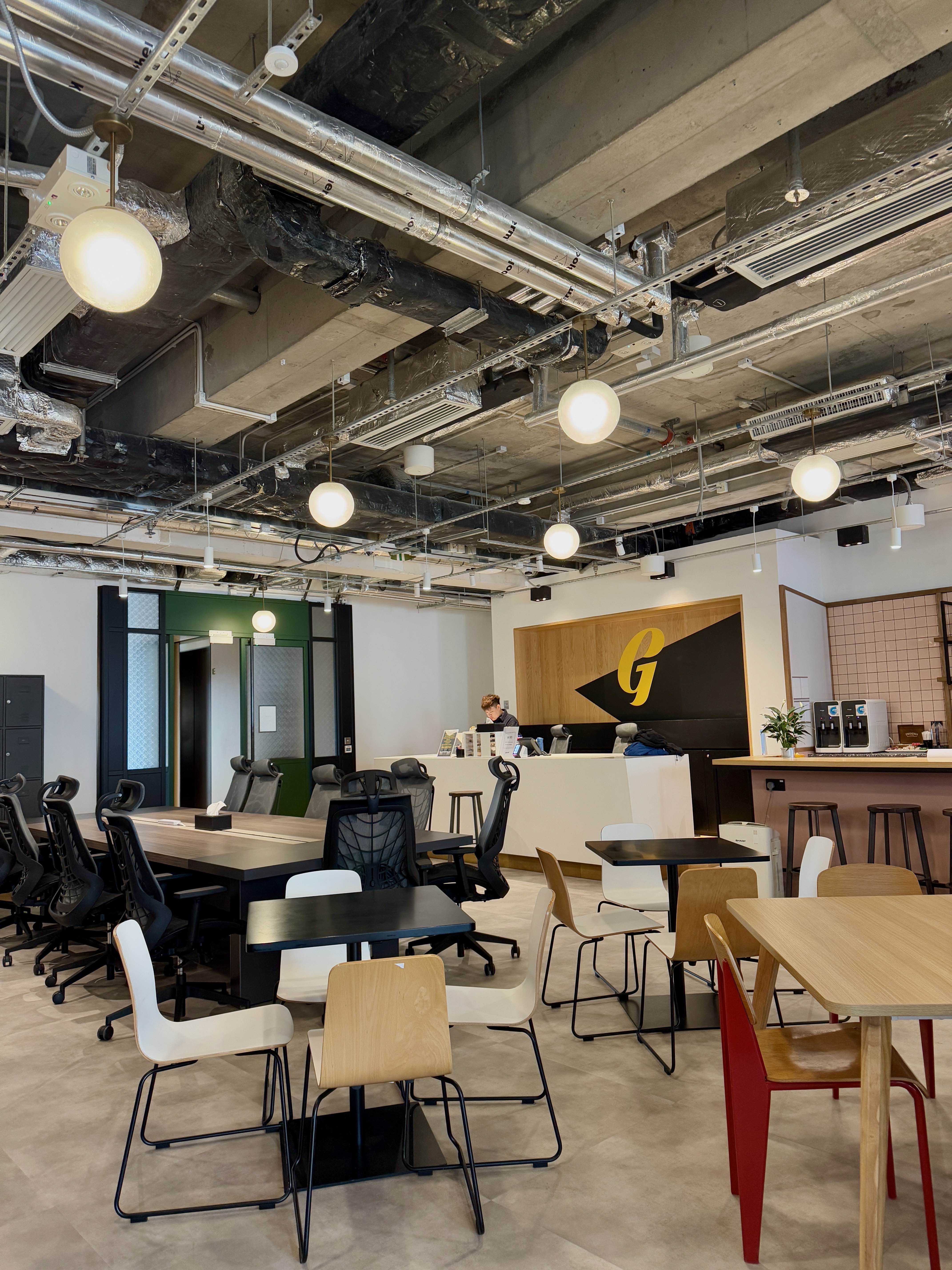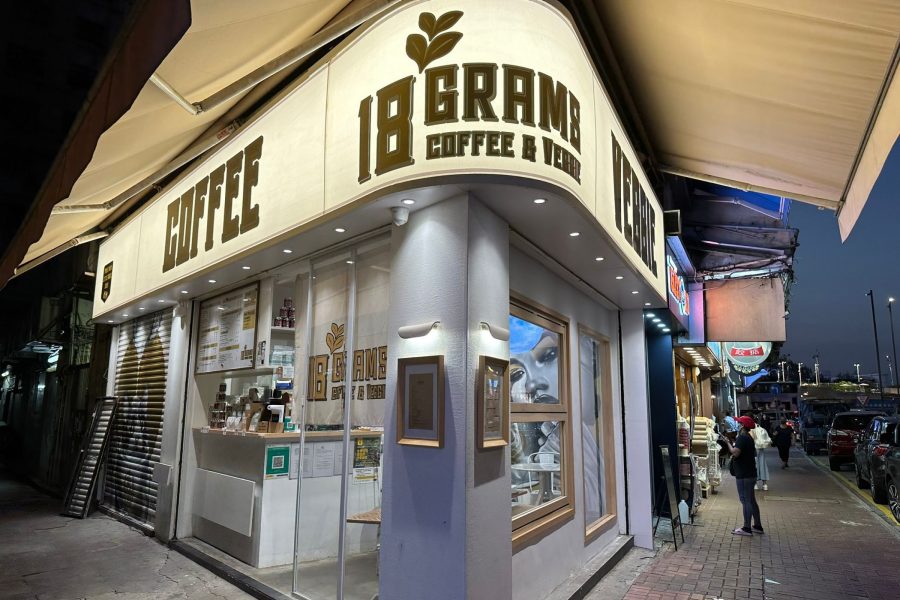LOCATIONS
Hong Kong
-
Facebook
-
LinkedIn
-
Instagram
-
Youtube
The office environment is key to boosting work efficiency and business innovation. Here are some office design ideas so you can improve workplace productivity!
The office environment is often overlooked as a vital ingredient to boost work efficiency and breed business innovation at work. Conventional office design with sterile offices that conveys an air of isolation is giving way to one that drives collaboration and interaction while enhancing privacy and concentration. It not only opens up a free-flowing forum of ideas, but it can offset the negative outcomes associated with a one-sided focus on the collaborative element in office design by catering to different types of work and different needs. Here are the five office design ideas that help you get the most out of your office environment to foster collaboration and teamwork among your team – and boost productivity.
Think of “Variety” Instead of “Open”
Emerging research has found that open offices are associated with low levels of employee satisfaction and less productivity, increased stress and errors, and higher rates of absenteeism including more sick days, instead of a one-size-fits-all approach, as is traditional in open plan design, the office environment should provide different options for different types of work and different needs.
To facilitate work efficiency and business innovation, companies should have a handful of huddle rooms for different activities, alongside meeting rooms. These rooms are constructed as intimate spaces that minimize noise and distractions while fostering collaboration and interaction. They should not require a booking for some healthy dose of spontaneity, in addition to having glass walls to avoid any sense of isolation and ensure transparency. Chairs and tables should be flexible and easily moved so that the space can be rearranged to increase creativity or enhance teamwork during a meeting.
As an average worker spends nearly seven hours a day on the computer, breakout areas can be a great escape, away from screens, designed to relax and reenergize. They should be designed as light, inviting and comfortable. Also, these areas can be where your team wind down after a daily grind. Apart from the collaborative side, it is also necessary to have one to two quiet rooms for activities that require a high level of concentration and a moment of peace.
Encourage Movement
The office environment should be designed to encourage movement, as people are likely to encounter creativity blocks and develop ergonomic-related injuries when they are glued to a particular place. Movement is vital to collaboration: people tend to become more alert and productive after taking a walk or having an insightful conversation with a co-worker. One of the ways to tap into this benefit is to provide “multifunctional, durable mobile workstations that can be wheeled around to always be found in convenient locations”, according to Emily Mackie, founder of Inspired Interiors. A mobile workstation can be standing desks, movable walls and areas that make it easier for employees to carry out their assigned tasks. Additionally, seating arrangements should be flexible, allowing different departments to get to know each other and the business as a whole, instead of being presented in silo departments which can subtly discourage conversations between team members.
Make Use Of Every Inch Of The Space
In Hong Kong where companies are looking to get the most out of a small office space, it is particularly crucial to rethink the purpose of every room in your office, as different environments are conducive to creative thinking and problem-solving.
For example, the kitchen does not have to be just a kitchen; you can easily convert it into a place for impromptu meetings by adding tables that can double as work stations or providing a few more snacks so people are more willing to drop in. Treat it more as a café instead of an industrial kitchen.
Bring In Natural Light
Poor lighting in the work environment can lead to eye strain, headaches, stress, fatigue and a host of other problems, both physical and mental. Ample lighting is a major component of productivity and employee health. If possible, you should provide your office with access to natural light – it’s bright and free! Consider using glass walls for the sides of the office or daylight harvesting to bounce the natural light coming in through the office throughout the day. If it is not feasible to put everyone near a window, install interior lighting to make sure ample lighting.
Inject A Dose of Art and Personality
A survey of more than 800 employees working for 32 companies throughout the U.S. with art collections in their work environment highlighted the importance of art in the workplace, citing stress reduction (78% agreed), creativity-boosting (64% agreed) and self-expression encouragement (77% agreed). Other than these benefits, having artwork in the office not only fosters interaction by creating a good atmosphere in the office and talking points for chatting, inspires creativity and encourages a stronger corporate culture. Whereas art inspiration comes in many forms, it depends heavily on the ambience that is needed in the work environment for maximum benefits. Interactive art such as kinetic artworks and light installations can help inject some dose of art and personality in your office, as it can offer the work environment an ongoing sense of intrigue and engagement. Click here to see what other ways you can use to improve workplace productivity through art.
At Garage Society, we provide a workplace that promotes work efficiency and business innovation with a balanced focus on collaboration and productivity. All our co-working spaces include mobile workstations such as standing desk, alongside dedicated areas for different needs. Apart from the usual paintings and art pieces, we hold special events, and arts- and crafts-themed workshops. Our co-working spaces are designed to capture the amplest natural lighting through the street-facing all-glass façade. If you want to look at other areas, please feel free to contact us here at Garage Society. We have 4 great co-working spaces in Hong Kong, 6 in India and South East Asia with a continuous expansion plan. We will be happy to invite you in for a site visit to find the perfect place to grow your business.
 Garage Blog
Introducing Garage Society's Newest Premium Workspace at Tower 535 Causeway Bay
Garage Blog
Introducing Garage Society's Newest Premium Workspace at Tower 535 Causeway Bay
We're thrilled to announce the opening of our newest Garage Society location in the heart of Hong Kong's most dynamic business district!
Garage Society Causeway Bay brings our signature blend of community, innovation, and premium workspace to Causeway Bay's prestigious commercial hub.
 Garage Blog
From Flat White to Flexspace - The Best Coffee Spots Near Garage Society Locations
Garage Blog
From Flat White to Flexspace - The Best Coffee Spots Near Garage Society Locations
Looking for the perfect cup of coffee to fuel your workday?
Members enjoy free coffee 24/7 in our spaces, but sometimes they need a change of scenery (or bean!). That's why we've compiled this guide to our members favourite independent coffee shops near each Garage Society location!
Whether you're a dedicated hot desk member or just exploring flexible workspace options, stay caffeinated and inspired with our picks below: